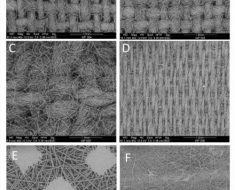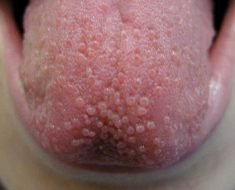As Associate Research Director, Professor Anne O’Garra helps to promote the Crick’s collaborative vision, encouraging scientists from different disciplines to work together. But when it comes to her own research, does she practice what she preaches? We examine the story behind her latest publication in Nature Immunology.
The body’s best-kept secrets
For decades, Anne’s lab has focused on understanding the immune system. Over millennia, we have evolved highly specialized immune systems that can stop and kill a wide variety of pathogens, such as bacteria or parasites.
The ‘adaptive’ immune response is responsible for killing pathogens using specialised immune cells called T and B cells, which are tuned to recognise specific targets on pathogens called ‘antigens’. These interact with ‘innate’ immune cells, which provide broad protection against infection, to coordinate attacks on infectious agents. This process is tightly controlled by many genes and proteins to ensure that the response is effective whilst causing minimal collateral damage to the host.
Many years ago, Anne discovered how a protein known as a cytokine or interleukin (IL) called IL-10 works to limit the immune response to control immune ‘friendly fire’. Many types of T cells secrete IL-10, including T helper cells, which tell other immune cells what to do. Although Anne discovered how IL-10 regulates the immune system, a key mystery remained: what regulates the regulator?
Cracking the code
To answer this question, over the last few years Anne’s team have been investigating the complex network of genetic switches that affect our immune cells. These switches, called transcription factors, can turn genes on or off, but individual genes can be regulated by more than one switch and many genes produce switches that affect other genes. This makes it very difficult to work out which switches are doing what.
Leona Gabryšová, a senior scientist in Anne’s lab, began by investigating the T cells that produce IL-10 in mice. Using an advanced genetic sequencing technique called RNA-seq, she compared T-helper cells which make IL-10 with those which did not produce IL-10. This allowed her to see which genes correlated with the expression of the Il10 gene, which produces the IL-10 protein when active.
Following many painstaking weeks in the lab and at her computer, Leona found that a transcription factor called c-Maf strongly correlated with Il10 gene expression. She then set out to test whether the absence of c-Maf in T cells affected Il10 gene expression, and how this affected the immune response in different diseases.
Since different genes are induced during different immune diseases, Leona worked with other groups at the Crick to test the role of c-Maf in different disease models in mice. Leona tested immune responses to the malaria pathogen in collaboration with Jean Langhorne’s Malaria Immunology lab, as well as studying the immune response to allergens and in autoimmunity in Anne’s lab.
“We expected c-Maf-deficient mice to experience more inflammation than unmodified mice across the board, as we see in IL-10-deficient mice,” says Leona. “We saw this in the malaria and allergy models, but were surprised to see that in the model of autoimmunity the c-Maf-deficient mice actually had less inflammation. There was clearly something else going on.”
What the Foxp?
Looking at the data, Leona noticed that c-Maf indeed was required for IL-10 production across the three disease models. However, c-Maf-deficient mice in the autoimmunity model had also increased numbers of the Foxp3+ regulatory T cell (Treg), a specific type of T cell that also helps to turn the immune response down; this highlights the complexities of the immune response! Understanding how and why this happened was a daunting task.
Between the reduction of IL-10 production in the absence of c-Maf and the increase in Foxp3+ Tregs , there was a bafflingly complex picture of events. Leona discussed the problem with Anne, and they realised they would need to look deeper to see the full picture. So Leona first applied RNA-Seq to T cells from the different disease models in the presence or absence of c-Maf to see what happened. She then began to untangle the complex data with the help of Raphaëlle Luisier, a postdoc who works with Group Leader Nick Luscombe, the bioinformatics guru whose lab is just across the atrium from Anne’s.
Reaching across the atrium
A few days later, Anne found herself chatting to fellow Group Leader James Briscoe in the bar. James was having a drink with some of the scientists in his Developmental Dynamics lab, who use genetic sequencing techniques to understand how the central nervous system develops.
As is traditional when scientists get together, it wasn’t long before the conversation moved to frustrations in the lab. When Anne mentioned her lab’s latest dilemma, James and Vicki Metzis, a developmental biologist in his lab, were quick to offer help. They use a deep sequencing technology called ATAC-seq, so Anne suggested a collaboration; could Vicki help Leona to set up this ATAC-seq for analyses of the T cells from these disease models, to unpick the complex genetic interactions behind their surprising results.
“The Crick is the best place in the world to do science—you’re surrounded by world-leading experts in a wide range of disciplines all developing and using novel technologies,” says Anne. “Our greatest resource is the critical mass of expertise under one roof, you’d be daft not to make use of it!”
ATAC-Seq and you will find
Leona and Vicki worked together to come up with a way to use ATAC-seq on the mouse T cells across the different disease models. This was far from easy, but with Leona’s understanding of immunology and Vicki’s expertise in ATAC-seq, they were able to see the activity of thousands of different genes.
“When before we didn’t have enough data, now we almost had the opposite problem!” says Leona. “Modern sequencing technologies generate huge amounts of data, far too much to make sense of manually. Fortunately, Anne had just recruited an intern who specialised in using software to analyse large data sets—a bioinformatician.”
Marisol Alvarez-Martinez had a history of using bioinformatics to understand immune genes, so she arrived at the perfect time. Under the guidance of Nick Luscombe, Marisol teamed up with Leona and Anne to try to make sense of the vast pool of genetic data they had collected. However, it was proving difficult to work out how the different transcription factors—those genetic switches—interacted with each other.
Finding BaGFoot
By chance, Anne got talking to fellow Group Leader Paola Scaffidi, who mentioned that she had invited Gordon Hager from the US National Cancer Institute to give a talk on tracking transcription factors. Leona and Marisol went to the talk and caught up with Gordon to see if his techniques could help with their research. Gordon shared an upcoming research paper detailing a new method called BaGFoot which could detect changes in transcription factors across networks.
Working together to apply BaGFoot to their data, the team uncovered a whole network of different genes in each disease that were affected by c-Maf.
“Marisol’s meticulous analysis revealed the profound effects of c-Maf on a wide network of different genes regulating the immune system,” says Anne. “She showied that the actual activity across the network was distinct for each disease. This provided potential explanations for the disease-specific effects of c-Maf.”
To test this hypothesis, Luke Cox, a Ph.D. student in Anne’s lab worked in parallel to see how simpler T cell cultures behaved in the petri dish. This revealed the molecular mechanisms behind the results that the team saw in mice.
“In the autoimmunity model, the impact of reducing the anti-inflammatory IL-10 protein was outweighed by the increase in Foxp3+ T cells,” explains Anne. “This shows that you can’t just say ‘this protein does this’ or ‘that gene does that’: context is critical.”
The bigger picture
The immune system is incredibly complex, with a lot of moving parts that we don’t fully understand. However, we now know more about what some of those parts do, how they interact with each other and how they respond to various diseases.
Along the way, the team also developed and refined a suite of sophisticated tools that will help other researchers to decipher some of the other complex genetic networks that operate in our bodies. These will help us to understand what goes wrong in different diseases and also predict the effects of treatments.
The project also forged new partnerships, with the scientists developing new skills. Marisol is returning to Anne’s lab in September 2018, to commence her Ph.D. studies as a wet-lab researcher, getting hands-on in the lab as well as continuing to handle complex data. The team continue to pursue other projects with different labs, making use of the breadth of talent and expertise at the Crick.
All of this was made possible through a series of informal interactions between researchers in the corridors and bar at the Crick. The conversations in the corridor, fleeting chats after meetings, stumbling across seminars and casual catch-ups over lunch or drinks. This shows the power of informal networks for producing world-class science.
Source: Read Full Article





